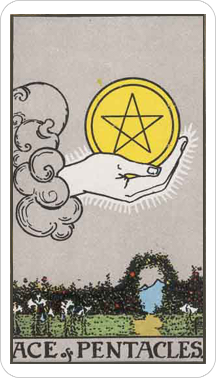We are flying to our home...wwwow...
Sugar..fly..fly ..fly...
ความเจ็บหนอความทุกข์หนอเมื่อสังขารไปก่อน
ความชาญฉลาดอ้อนไม่อยากไปด้วย
ความชราได้แต่คอยกระตุ้นเตือนและทอดถอน
อนิจจาพรใดไหนเล่าจะเลอเลิศเท่าสุขภาพดีนั้นไม่มี
อันเพราะว่าความจำของฉันเสื่อมถอย
ขยับตัวก็ค่อยค่อยคืบไปไม่เร็วรี่
หงุดหงิดกังวลทุกอย่างไม่มีอะไรดี
ฉันเคยเก่งกาจมากมีเงินทองผู้คนพะเน้าพะนอ
บัดนี้สีผมก็ดำด่างสีไปแปลกแตกต่างกว่ารุ่นรุ่น
ฟันเหลืองเคี้ยวก็ยากเดินทางจากฉันไปไม่รอ
ความจำฉันจำได้เฉพาะที่ฉันเคยคิดว่าได้มาพอ
อันไหนฉันเสียประโยชน์ฉันก็ร้องอ้อว่าฉันลืม
อัจฉริยะหาทรัพย์มาด้วยลำแข้ง
เสน่ห์ฉันก็แรงแสนจะปลื้ม
อดไม่ได้ขออวดว่าแฟนฉันตรึมตรืม
มีทุกประเภททุกเชื้อชาติทุกผิวพรรณอึ้มสวยยืนพื้น
ถึงเวลาต้องพักแล้วหรือนี่
ฉันยังมีความสุขกับการทำงานใจมันฝีน
ตะบันน้ำตะบันสากตะบันบ้าสุดจะกลืน
ก็พอขืนคิดว่าใจมันยังสู้ไม่ถอย
มองตามวัยรุ่นตาละห้อยรุ่นลูกหลาน
แค่มองก็พอตาหวานแช่มช้อย
นกน้อยคอตกปริบปริบปรอยปรอย
ค่อยค่อยตะบอยเออหนอชีวิตไม่จีรัง
อาณาจักรทั่วฟ้านภากาศ
ฉันประกาสศักดามาไม่ยั้ง
ดวงจันทร์ดาวอังคารที่ไหนไม่คณานัง
ฉันไม่ฟังใครหรอกหากไม่มั่นใจ
คิดลำดับความสับสนและซึมเศร้า
อันไหนก่อนอันไหนหลังมันสับสน
ยอดมนุษย์ต้องไม่มีทางอับจน
ชนชั้นแนวหน้าอย่างฉันต้องสู้ถึงที่สุด
อะไรว่ายากฉันไม่กลัวต้องทำให้ได้
ขอเรียนจากเด็กเมื่อวันซืนให้มันสอนให้อย่าได้หยุด
เห็นไหมเล่าทุกอย่างเรียนรู้ได้ไม่โทรมทรุด
อย่าทำตัวชำรุดไร้ราคาเหมือนสังขาร
คุณภาพของคนนั้นคือไม่อยู่นิ่ง
ต้องเก่งจริงไม่มีห่วยให้แกร่งกร้าน
ไม่ถูกน็อคจนสลบตบกระบาล
อ่านอ่านอ่านเรียนรู้ของใหม่ความคิดใหม่ทุกวินาที
ใช้สมองให้คุ้มค่าที่เกิดมาฉลาด
จะช่วยชาติช่วยตัวเองให้รอดทุกวิถี
ดิ้นรนทุกประการทรัพย์และชีวิตย่อมรอดปรีดี
มีมันต้องมีต้องอยู่ได้อย่างหรูหรูเพราะค่าตัวแพงคุ้มกับเป็นนักคิด
จบก่อน
เดินทางโดยสวัสดิภาพนะจ้ะ
จากนกอินทรีย์อีกตัว
มันบินสูงและมันมองไกลมากละ
The regal bald eagle; photo by Andrew Price on Flickr (noncommercial use
permitted with attribution / no derivative works). See All State Birds.
American Bald Eagle
The American bald eagle (Haliaeetus Leucocephalus) was adopted as the official bird emblem of the United States of America in 1782. The bald eagle was chosen because of it's majestic beauty, great strength, long life, and because it's native to North America. In the wild, an eagle will live 30-35 years (up to 50 years in captivity). A full-grown bald eagle has a wingspan up to 7 feet. They fly up to 30 miles an hour and can dive at 100 miles an hour! Eagles feed primarily on fish, supplemented by small mammals, waterfowl, and carrion.
Eagles mate for life, and an established pair will use the same nest for many years. Over time some nests become enormous - they can reach a diameter of 9 feet and weigh as much as 2 tons! The female lays 2 or 3 eggs and both parents share incubation and guard them diligently against predators (such as squirrels, gulls and ravens). While the chicks are small, the parents move about the nest with their talons balled up into fists to avoid harming them.
| |
Source: |
American Bald Eagle: National Wildlife Federation
|
Links: |
Symbols of U.S. Government-The Bald Eagle: Ben's Guide
|
http://www.statesymbolsusa.org/National_Symbols/Bird_bald_eagle.html
The Ace of Chalices card suggests that my power today lies in capturing the essence. My emotions are valid. I am beautiful and I deserve to pursue, share, and express unconditional love, pleasure, and happiness. I bring new love into the world. I am empowered by love and my gift is beauty in truth.
A 'club sandwich' may support life on Jupiter's moon Ganymede
Ganymede, the largest moon in the solar system, may have interior oceans between ice layers.
STORY HIGHLIGHTS
- Ganymede's oceans may have 25 times the volume of Earth's
- Life may arise from chemical interactions between water and rock, scientists say
- Ganymede is one of several moons in our solar system that may support life
(CNN) -- At least one corner of the solar system may be serving up an ice-and-water sandwich, with the possibility of life on the rocks.
NASA researchers, publishing in the journal Planetary and Space Science, have demonstrated that this "club sandwich" phenomenon may be happening on Ganymede, the largest moon in the solar system and a satellite of Jupiter.
This finding means that life could have even arisen on Ganymede. The study suggests there may be a layer of salty water directly on top of Ganymede's rocky core. Chemical interactions between rock and water could lead to the formation of life, scientists say.
"This is good news for Ganymede," said lead study author Steve Vance of NASA's Jet Propulsion Laboratory in a statement. "Its ocean is huge, with enormous pressures, so it was thought that dense ice had to form at the bottom of the ocean. When we added salts to our models, we came up with liquids dense enough to sink to the sea floor."
The oceans of Ganymede may have 25 times the volume of Earth's oceans, scientists said. But Ganymede is also smaller; it has an average radius of 1,634 miles, about 41% of Earth's.
There is only a handful of places in the solar system thought to have subsurface oceans. There is strong evidence that Europa, another moon of Jupiter's, and Saturn's moons Enceladus and Titan have oceans under ice as well. Jupiter's moon Callisto is also a contender.
Data from NASA's Cassini spacecraft suggested last month that Enceladus has an ocean at least the size of Lake Superior under its ice layer.
http://edition.cnn.com/2014/05/02/tech/innovation/moon-jupiter-ganymede/index.html





















